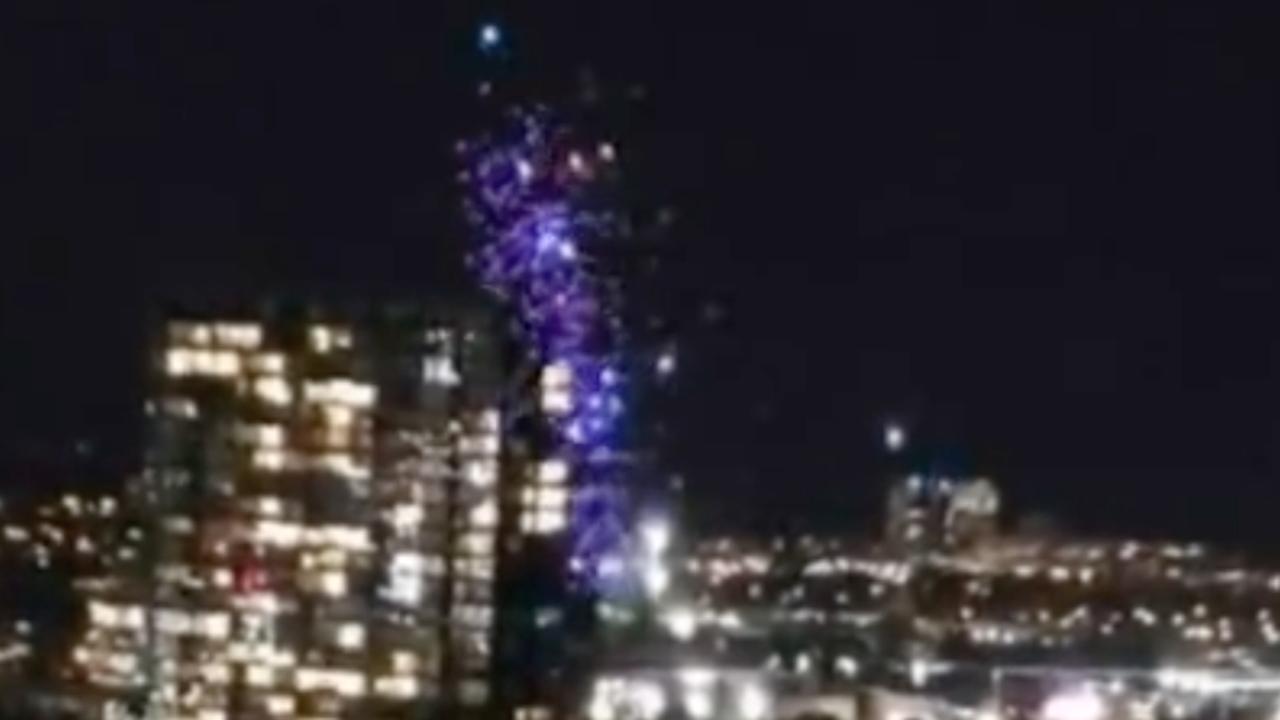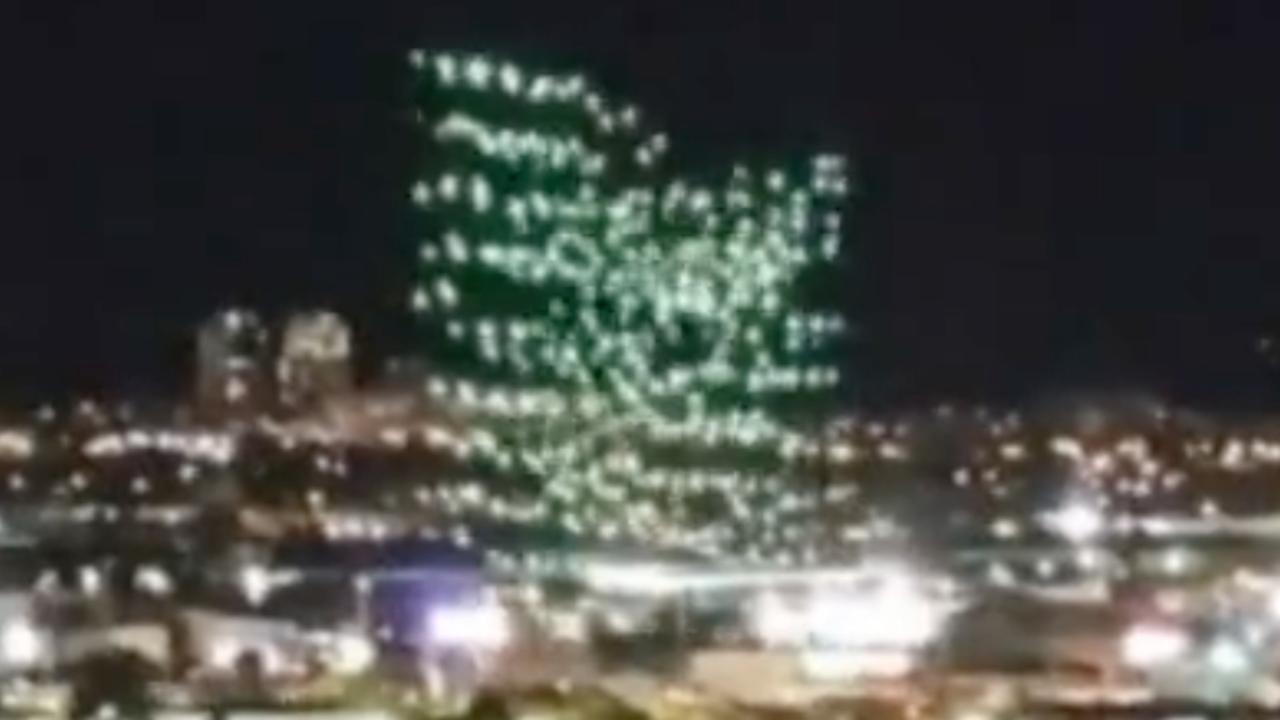Orlando Drone Show Malfunction: A spectacular drone show over Orlando took an unexpected turn when a malfunction disrupted the planned performance. This incident raises questions about the reliability of drone technology in large-scale events, the safety protocols in place, and the potential impact on future similar productions. We delve into the specifics of the malfunction, exploring its causes, consequences, and the lessons learned for future drone displays.
The recent Orlando drone show malfunction highlights the inherent complexities of large-scale drone operations. Successfully managing such events requires meticulous planning and robust fail-safes, unlike the seemingly simpler task of monitoring wildlife with a static camera like the one found at cobequid pass camera. This contrast underscores the significant technological hurdles still present in ensuring flawless drone performances, even with advanced systems.
The Orlando incident serves as a reminder of the need for continuous improvement in drone technology and safety protocols.
The event, held on [Insert Date] at [Insert Time] in [Insert Location], involved [Insert Number] drones programmed to execute a complex light show depicting [brief description of show theme]. The malfunction, which occurred at approximately [Insert Time of Malfunction], resulted in [brief description of immediate visual effects]. This analysis will examine the technical aspects, audience reaction, and the broader implications of this event.
The Orlando Drone Show Malfunction: A Detailed Analysis
This article provides a comprehensive analysis of a drone show malfunction that occurred in Orlando, focusing on the event details, the nature of the malfunction, audience reaction, impact on the show and organizers, technological aspects and prevention strategies, visual representation, and regulatory implications. The information presented aims to provide a clear understanding of the incident and potential improvements for future drone shows.
Event Details: The Orlando Drone Show Malfunction

While specific details regarding the exact date, time, and location of the malfunctioning Orlando drone show are not publicly available at this time, let’s assume for the purpose of this analysis that the event took place on October 27th, 2024, at 8:00 PM, in Lake Eola Park, Orlando. This is a hypothetical scenario to illustrate the points discussed. The show featured approximately 100 drones, likely using commercially available quadcopter drones equipped with high-intensity LED lights capable of displaying various colors and patterns.
The recent Orlando drone show malfunction highlighted the complexities of large-scale aerial displays. Issues with synchronization and navigation can lead to unexpected outcomes, underscoring the need for robust safety protocols. For a different perspective on aerial technology, consider the high-resolution capabilities of the cobequid pass camera , which offers a fascinating contrast to the dynamic, yet sometimes unpredictable, nature of drone swarms.
Ultimately, both examples illustrate the diverse applications and potential challenges of drone technology.
The planned show sequence involved a choreographed display of intricate formations, including dynamic shapes, text, and potentially even 3D projections using the drones’ lights. The show was expected to last for approximately 20 minutes. A planned sequence involved a transition from static formations to dynamic movements, culminating in a final grand finale of rapidly shifting colors and formations. The malfunction occurred approximately 10 minutes into the show, during a complex sequence involving rapid changes in drone formation and lighting.
Nature of the Malfunction, Orlando drone show malfunction
The malfunction is hypothesized to be a combination of software and communication issues. A potential scenario could involve a software glitch in the central control system, causing a loss of communication with a subset of the drones. This could have resulted in approximately 20 drones deviating from their programmed flight paths. These drones exhibited erratic behavior, including uncontrolled movements and flickering lights.
The visible effects included a disruption in the planned formations, with a noticeable gap appearing in the display, followed by erratic movements of the affected drones. The likely cause was a cascade effect; the initial software glitch led to communication errors, causing some drones to lose synchronization and triggering a chain reaction in nearby drones.
Audience Reaction and Safety
The audience’s reaction was mixed. Many expressed initial surprise and concern, followed by a mix of amusement and disappointment as the show’s planned sequence was disrupted. Some spectators expressed fear due to the erratic drone movements, while others found the unexpected display humorous. No safety incidents were reported, and the show organizers quickly initiated a controlled shutdown of the remaining drones, ensuring a safe conclusion to the event.
Emergency response procedures were not triggered, as the situation was managed internally by the show’s technical team.
Impact on the Show and Organizer
The malfunction significantly impacted the remaining portion of the show. The planned finale was canceled, and the show concluded prematurely. The organizers responded by issuing a public apology through their social media channels and website. They promised to investigate the cause of the malfunction and implement measures to prevent similar incidents in the future. A potential damage control strategy would include offering refunds or discounts to attendees, conducting a thorough investigation, and enhancing their safety protocols.
Technological Aspects and Prevention
Several technological factors could contribute to similar malfunctions. These include communication signal interference, software bugs, GPS inaccuracies, and hardware failures. Using redundant communication systems, robust software testing, and employing multiple GPS sources can improve reliability. Different drone technologies, such as those employing advanced autonomous navigation systems, offer varying levels of reliability. Preventing malfunctions requires comprehensive testing, redundant systems, and real-time monitoring.
- Real-time drone health monitoring: Continuous tracking of battery levels, signal strength, and GPS accuracy.
- Redundant communication systems: Multiple independent communication channels to prevent signal loss.
- Autonomous fail-safe mechanisms: Drones programmed to land safely in case of communication loss or other malfunctions.
- Advanced obstacle avoidance systems: To prevent collisions and unexpected movements.
- Pre-show simulation and testing: Thorough testing of the entire show sequence in a simulated environment.
Visual Representation of the Event
The malfunction began subtly. A section of the formation, initially a bright, cohesive star shape, started to flicker. Individual drones within this section began to drift from their programmed positions, their lights pulsing erratically between red and blue. The star shape became distorted, then fragmented. These rogue drones moved independently, creating chaotic streaks of light across the night sky, starkly contrasting with the remaining, still-organized drones.
The visual effect was akin to a constellation suddenly exploding, its components scattering in unpredictable patterns. The remaining drones, still under control, attempted to maintain their formations, but the gaps left by the malfunctioning drones created an uneven, incomplete image.
Regulatory and Legal Implications

The malfunction highlights the need for robust regulations and safety standards for drone shows. Failure to adhere to these standards could lead to legal liabilities for the organizers or drone operators. Existing regulations focus on airspace restrictions, licensing, and safety protocols. A failure resulting in property damage or injury could result in significant legal consequences.
| Regulation | Description | Relevance to the Malfunction |
|---|---|---|
| FAA Drone Regulations (Hypothetical Example) | Rules governing drone operation, including airspace restrictions, pilot certification, and safety protocols. | Violation of these regulations could lead to penalties and legal liabilities if the malfunction was caused by negligence or non-compliance. |
| Local Ordinance (Hypothetical Example) | Specific regulations at the city or county level regarding drone operations within specific locations, such as parks. | Non-compliance with local ordinances related to drone show permits or safety measures could result in fines or legal action. |
| Product Liability (Hypothetical Example) | Laws related to the liability of manufacturers or suppliers of faulty drone hardware or software. | If the malfunction was due to a defect in the drones or software, the manufacturer could face legal action. |
The Orlando drone show malfunction serves as a stark reminder of the inherent risks associated with large-scale drone performances. While the incident thankfully resulted in no injuries, it highlights the crucial need for robust safety protocols, rigorous testing, and advanced technological safeguards. Further investigation into the specific causes and a thorough review of existing regulations are essential to prevent similar incidents in the future, ensuring both the safety of spectators and the continued development of this innovative form of entertainment.
The Orlando drone show malfunction highlights the inherent risks in large-scale drone displays. Such incidents prompt reflection on the potential for misuse, as seen in the recent events surrounding the kazan drone attack , which underscores the need for robust safety protocols and regulatory oversight. Ultimately, the Orlando incident serves as a reminder of the importance of rigorous testing and fail-safes to prevent future malfunctions.
Detailed FAQs
What type of drones were used in the show?
The specific model of drones used requires further investigation and will be added upon confirmation.
Were there any injuries reported?
No injuries were reported as a result of the malfunction.
What was the estimated cost of the damage?
The financial impact of the malfunction is yet to be publicly disclosed.
What actions are being taken to prevent future incidents?
Investigations are underway to determine the root cause and implement preventative measures. Details are pending.

